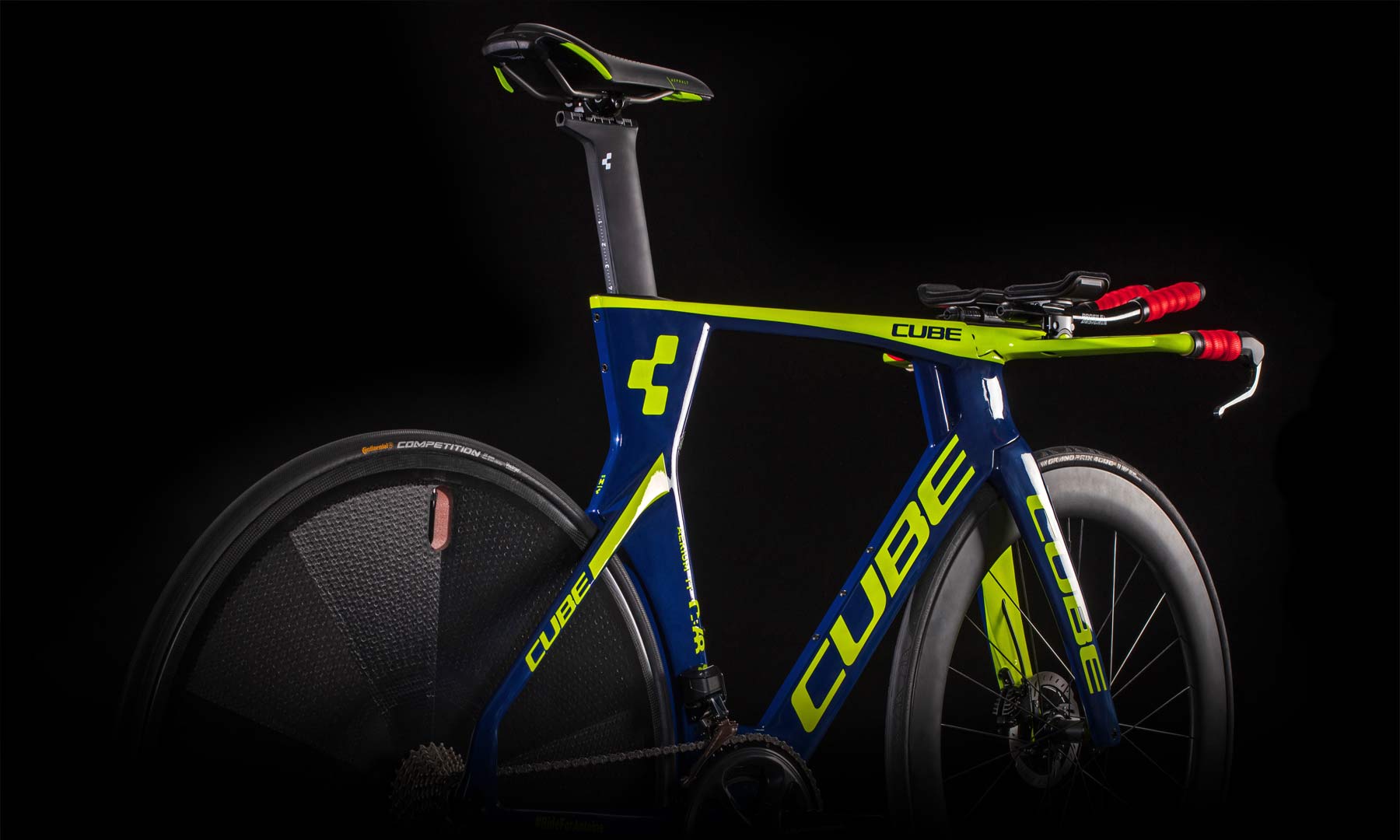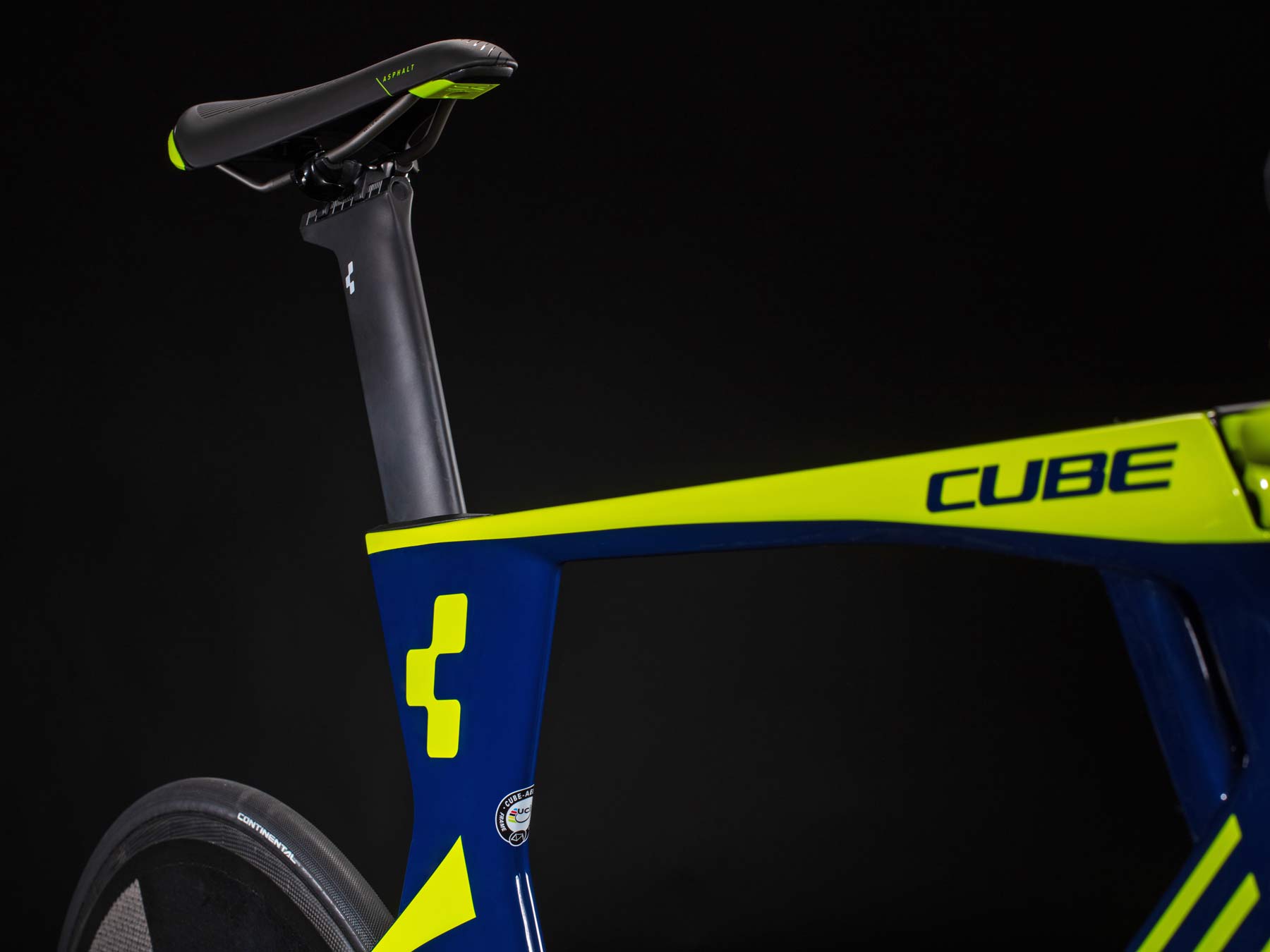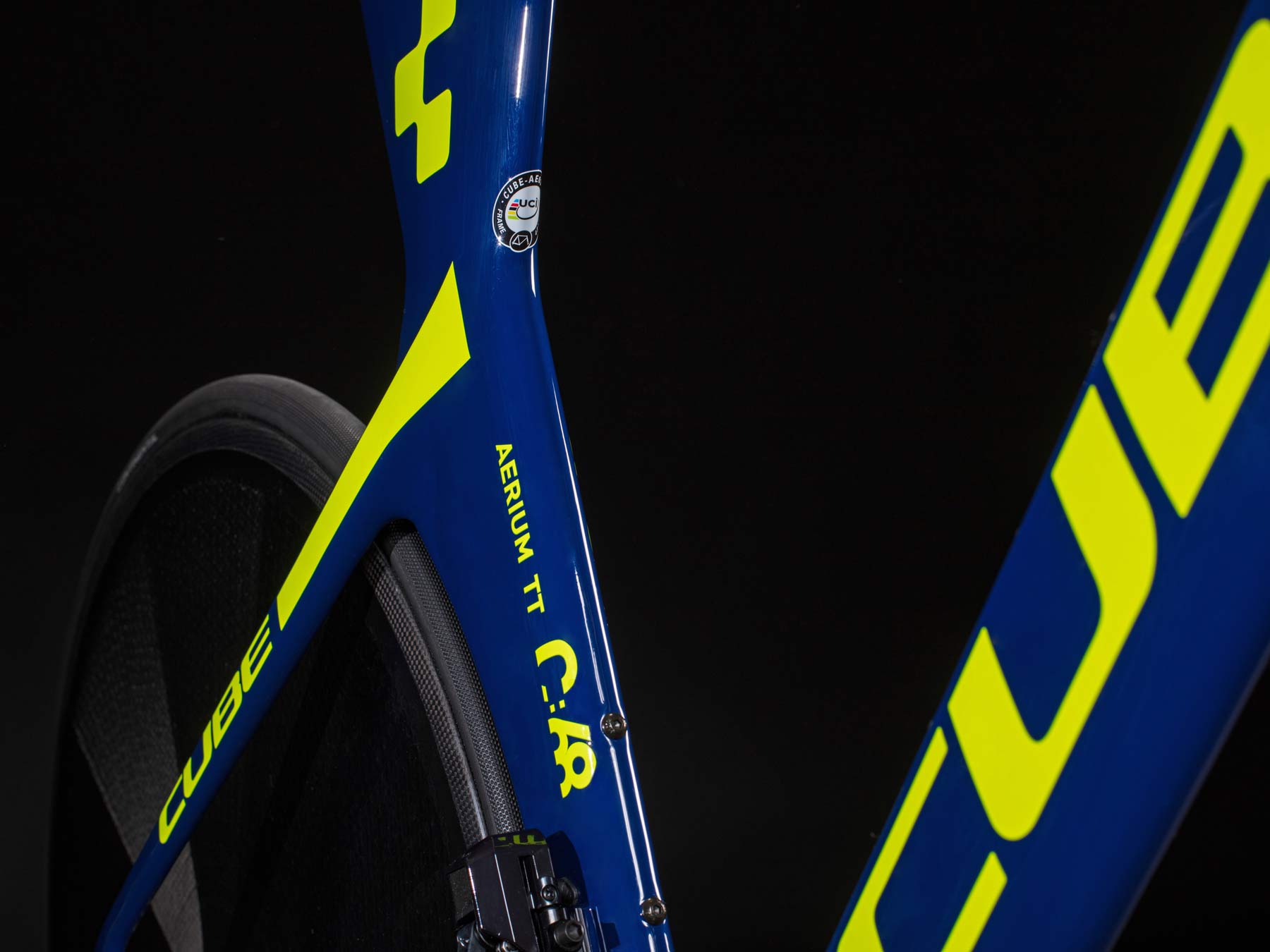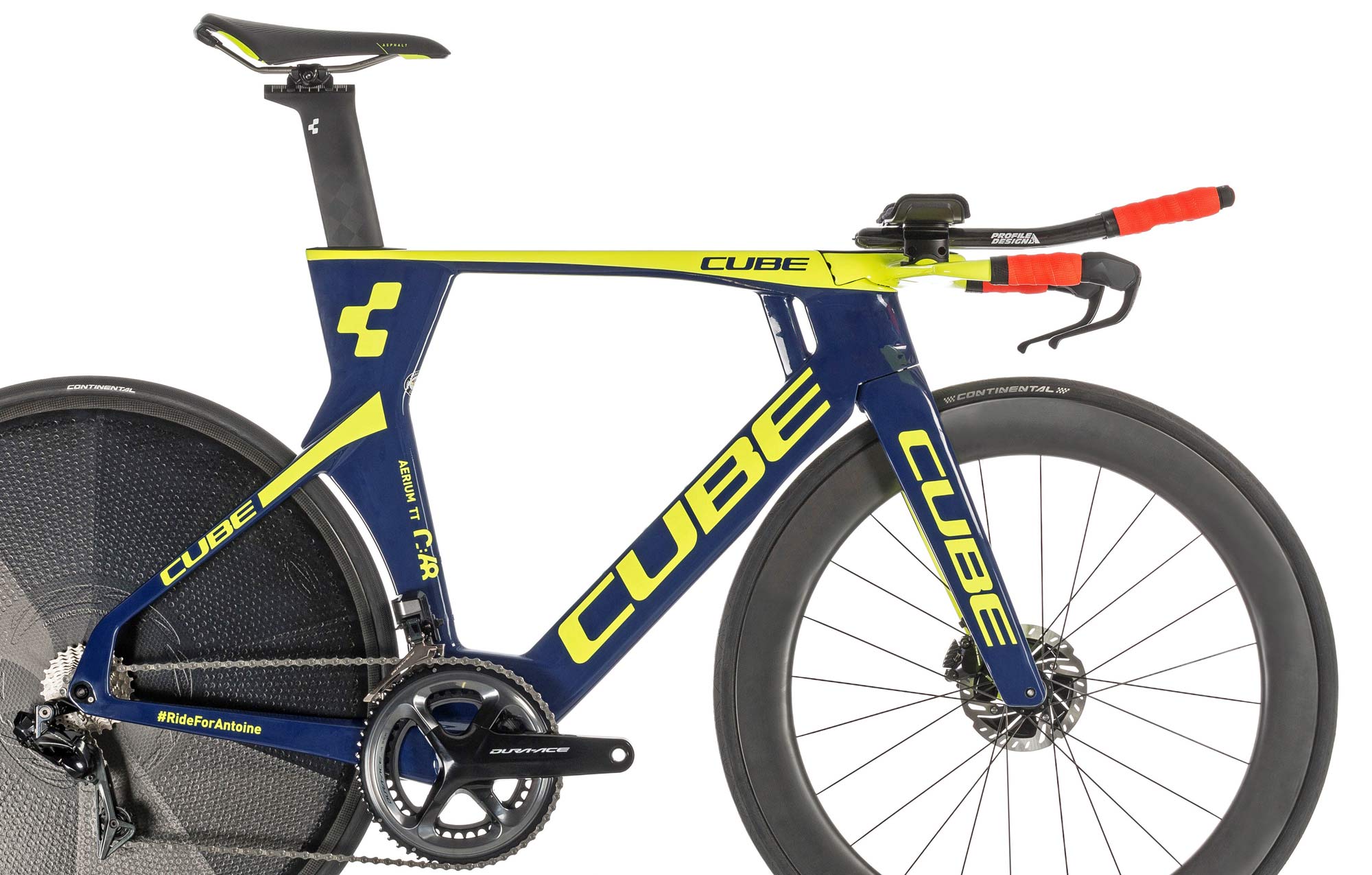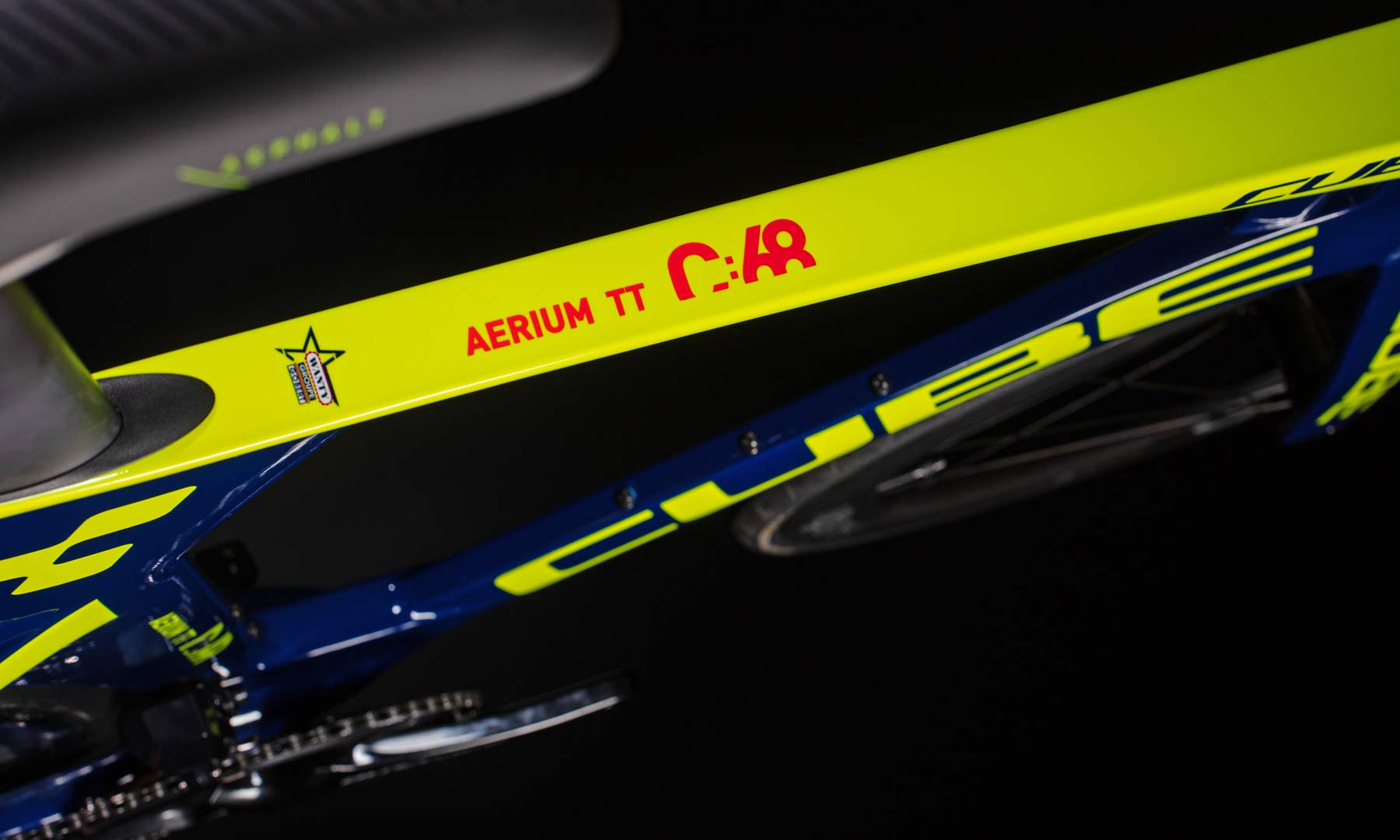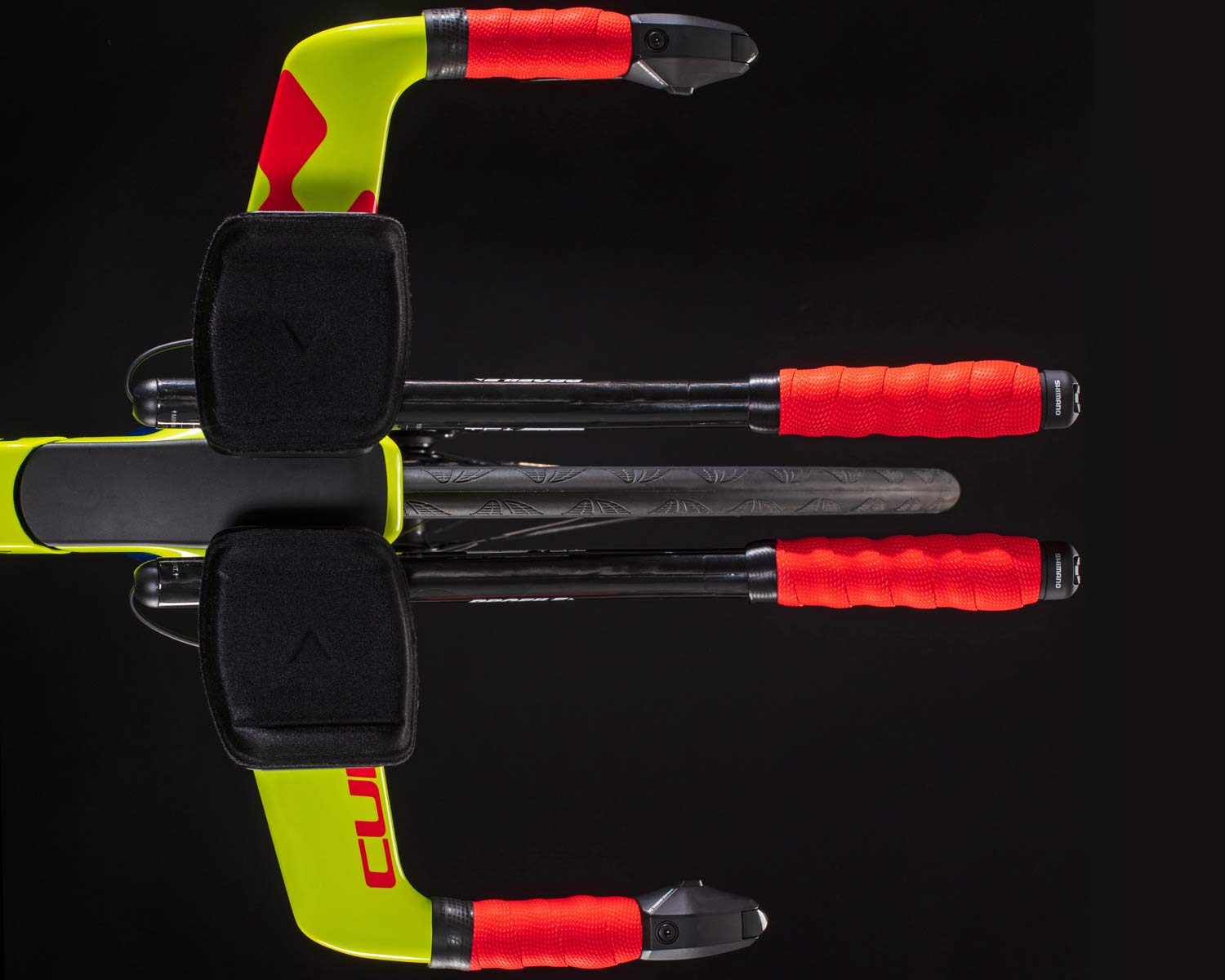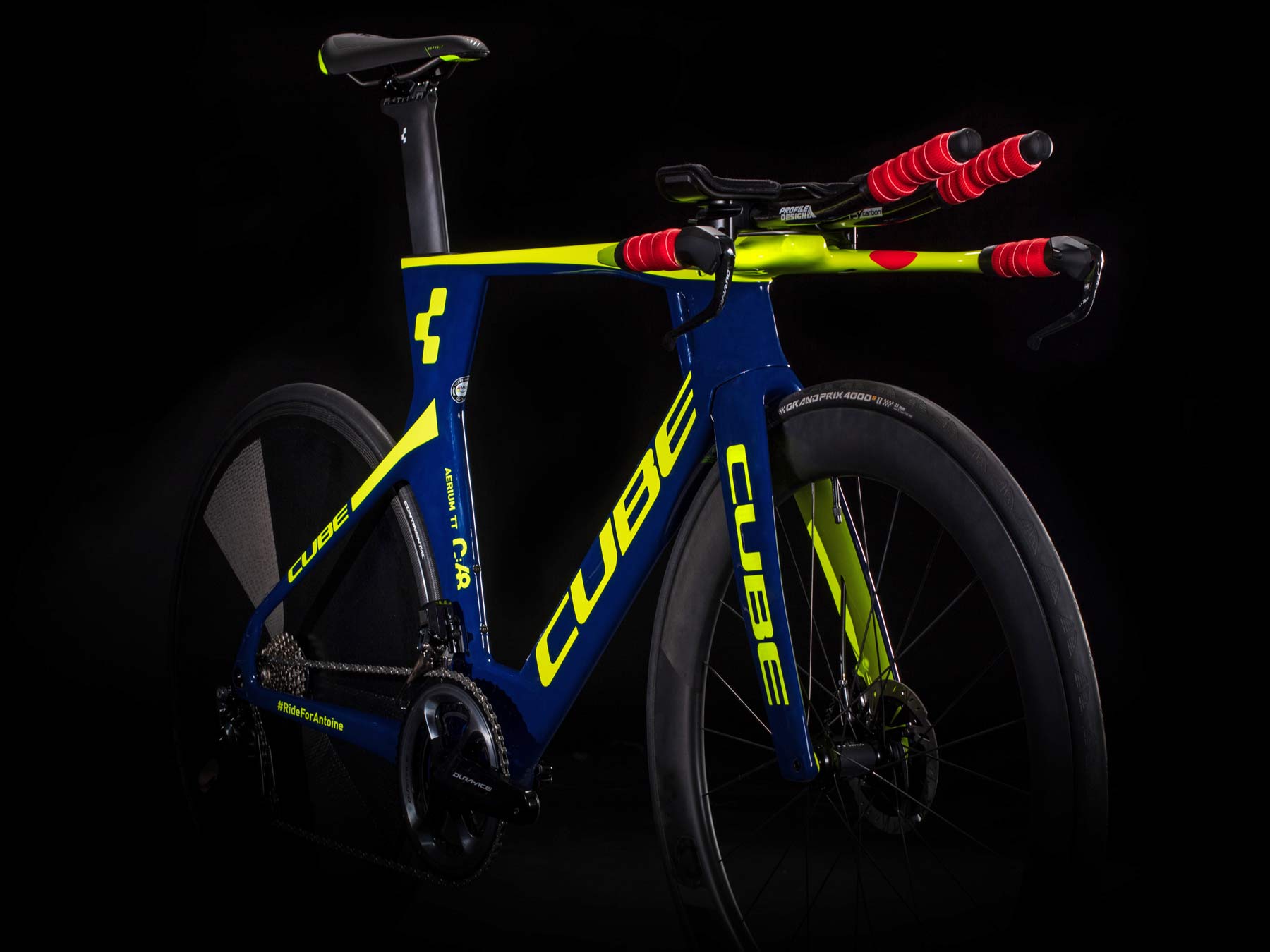Cube has taken their Ironman-targeting Aerium and given it a UCI-approved overall, ready to line-up in the start house at next month’s Tour de France. The new carbon disc brake Cube Aerium TT C:68 will cut through the air, racing against the clock under the Wanty-Groupe Gobert pro conti team.
Cube Aerium TT C:68 UCI-approved carbon time trial bike
Faced with a super aero triathlon bike that was never going to fit within the UCI guidelines, Cube’s engineers took their Aerium tri bike back to the drawing board to create a similarly aerodynamic bike for their pro riders to race at the World Tour and Grand Tour level.
The resulting Aerium TT C:68 shares many aero design and premium carbon construction characteristics with that tri bike, now with disc brakes and revised shaping to satisfy the UCI.
The biggest visual change besides more consistent disc braking, is the more standard dropped seatstay configuration and the removal of the BB fairing on the tri bike that connected those stays all the way to the downtube.
Cube reminds us that the UCI was said to have dropped the 3:1 tube shaping rule since the beginning of 2017, opening up a bit more opportunity for design flexibility. In facts, they say this is one of the first bikes to come out, after that UCI rule change. There still remain tons of cryptic rules laying out minimum & maximum tube dimensions, tube angles, and whatnot (that’s why the flattened, horizontal seatstays weren’t allowed.) If you want to dig into the details, feel free to try to decipher the UCI Technical Guidelines yourself (where you’ll also note that the 3:1 rule didn’t actually go away.)
The Aerium TT shares the Twin Head Tube design of its tri sibling, stacking a smaller tube behind the first. Under low yaw angle winds the tubes act together as one longer aero section, but as wind comes more from the side they act separately lessening side force.
By ditching rim brakes altogether, the new disc brake TT bike was able to create a cleaner front end without the need for an external fairing. Both in the fork leg and on the chainstay flat mount disc calipers were able to neatly tuck in (accompanied by 12mm thru-axles), out of the wind for a simpler solution overall, while improving rider control through the use of hydraulic brakes that can more effectively transition the tight bends needed for internal routing in the integrated aero cockpit.
Like the rest of Cube’s top end bikes the C:68 moniker denoting the 68% carbon composition to 32% resin allowed engineers to develop maximum frame stiffness for predictable handling.
Up front the bike carries over the cockpit adjustability concept developed on the tri bike. Two different integrated stem+basebar versions – high or low like this bike – give riders a wider base stack number to tune in the ideal aero fit. On top of that basebar, modular riders and extensions made by Profile give a full range of fit possibilities. Out back, the saddle clamp slides back & forth on a long rail offering huge adjustability as well.
The Aerium TT C:68 will get its official racing debut at the Tour de France Team Time Trial on July 9 in Cholet. The new TT bike will be available in three frame sizes (XS-M), plus two cockpit heights to further individual fit. Official consumer availability and pricing has not yet been released, but we will update when we know more.
